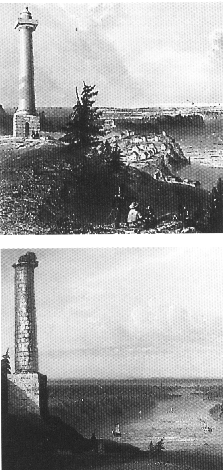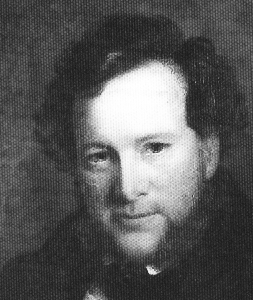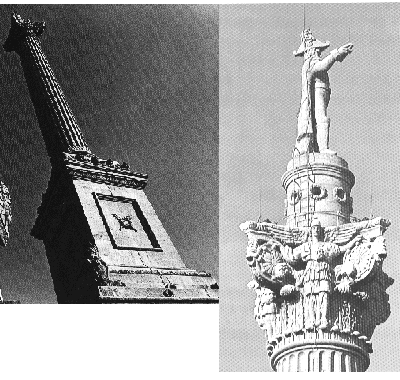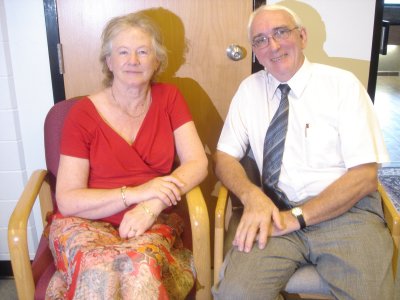
foreword | Historical Narratives | Resources | Links | Contact
REMEMBER BROCK, PART 4
History is a pattern of timeless moments.
Some souls are the Hesperides [*]
Heaven sends to guard the golden age
True Martyr, Hero, Poet, Sage
And he was one of these.
Wrestling with some Pythonic wrong,
In prayer, in thunder, thought, or song;
Briareus-limbed, they sweep along,
The Typhons of the time.
In 1840 on Good Friday morn, sixteen years after Brock's second burial, his eternal rest was disturbed yet again when his imposing monument was blown up as a result of "a malicious act by a band of felons." A thousand pound reward was posted for capture of the culprits, but it was never paid. As a result of this outrageous act, a remarkable outpouring of public sentiment occurred which culminated in a monster meeting held on the Heights of Queenston on July 30th 1840.
 |
|
Brock's Original & Bombed Out Monument |
The "beautifully fine" day was declared a holiday and eight thousand people gathered from every part of the province to decide upon a fitting replacement for the mangled monument. Ten steamers proceeded slowly up the Niagara River bringing throngs from Cobourg, Toronto, Hamilton, Kingston and elsewhere with H.M.S. Travellerbringing up the rear bearing Lieutenant Governor Sir George Arthur and his suite. They steamed "in splendid order up to Queenston accompanied by bands playing, colours flying and cheers from thousands lining the banks." The militia officers in blue uniforms with epaulettes and silver on the sash and the sword formed into two lines between which passed the Governor and other notables. The Royal Artillery fired a salute. All climbed the hill to the heights
With Sir George in the chair, the province's most eminent and eloquent recalled with patriotism and passion "the perilous times when Brock's fortitude inspired courage and his sagacious policy gave confidence in the face of a hostile force that was apparently overwhelming. It is impossible to ignore the alarm, confusion and despondency which settled down like a black cloud upon the country until suddenly day broke through the gloom and the stalwart form and sterling character of Brock strode into light."
Eleven resolutions were approved that day including one to appoint a new monument committee of twenty citizens headed by Sir Allan MacNab. A feast followed the business. Six hundred sat down to the obligatory banquet inside a temporary pavilion 58.5 m. long and 16.8 m. wide. A local innkeeper and his staff including 50 waiters fed the gathering at seven shillings a head. Among other goodies they consumed 12 wild turkeys, 30 wild geese and 200 chickens.
.Controversy arose regarding the removal of Brock's bones from the rubble of the first monument. No formal arrangements had been made for their "decorous disinterment," and according to some onlookers, the workmen responsible for the task of removing the "illustrious pair," showed no reverence or respect whatsoever. They simply shovelled up skulls, bones, dust, dirt and all and tossed them into two boxes made of unfinished pine planks where they were to rest for the next thirteen years in the private burial-ground of Mr. Robert Hamilton's garden at the foot of the hill in Queenston.
The search began anew for the money and the man to build an even finer monument for Sir Isaac Brock. In Upper Canada, Sir Isaac Brock had become an increasingly important symbol, not just of courage and loyalty, but as a test of Toryism in the province. Subscribing to his monument fund was not only a social responsibility, it became an obligatory act of loyalty. The initial response to the appeal was good and monies flowed in from private citizens.The officers and men of the militia [**] and Aboriginals including the Mohawks and the Senecas who fought at Queenston Heights heavily subscribed to the campaign.
The competition for a design for the second monument resulted in thirty-five submissions. From among them an Egyptian-style obelisk was selected and its designer, Thomas Young, was awarded 25 pounds. The cost of its construction was estimated at 5000 pounds. The initial burst of enthusiasm resulted in 3200 pounds being raised after which donations dropped off. Faced with a shortfall, the commissioners appealed without success for government support. Work on the project languished and little was done until public criticism of both the delay and the design reached a peak in 1848, when the municipal council of Niagara petitioned parliament for an investigation. Under fire for not moving ahead quickly enough with the long-delayed project, Sir Allan McNab blamed the lack of progress on their failure to find sufficient funds and things dragged on into the next decade.
By 1852 a revival in interest in the project resulted in contributions reaching 5700 pounds. By this time the commissioners were also having second thoughts about the obelisk proposal. Their consternation concerned the fact that it had been announced in Washington that the national monument to President George Washington would be an obelisk. The obelisk was out. as a monument for Brock and they rescinded their earlier decision to accept Young's design. The same design as Washington's was totally unacceptable for the hero who had fallen fighting Yankees. A British precedent was needed and the next round of submissions provided a commission and a controversy.
The new architectural competition resulted in fewer local submissions, for some architects were angry because of the arbitrary repudiation of a collegue's commission and they decided to boycott the business entirely. Designs were received from as far away as Boston and London. Ironcially, the Commission's rejection Young's submission did not deter him from trying again. Another architect, William Thomas, who had submitted drawings for the Nelson monument in London, was particularly interested in triumphal design, but never expected that Canada would accept a likeness of London's monument. To guard against this, he doubled his chances by submitting two proposals, the second of which was selected unanimously be the full committee on August 2nd, 1852.
 |
|
William Thomas |
The Brock monument, which ascended in sections from the ground up. was made of local Queenston limestone. Its fluted column containing 250 steps rises 30 metres to the capital, described by Thomas as "very beautiful and appropriate," on each face of which is a winged figure of victory with extended arms over shields. At the summit is the 4.9 metre stone-carved statue of Sir Isaac Brock in military pose with one arm extended holding a baton, the other resting on the hilt of his sword.
The cornerstone of the new monument was laid on the anniversary of Brock's death, October 13, 1853. The well-travelled remains of Brock and Macdonell were laid to their final rest in new 1.5 metre-long caskets. Their length was criticized by one reporter, who argued that the coffins should have been the full size of the men whose remains they contained. Future generations examining them, he protested, would assume that Brock was pint-sized person instead of a strapping six foot two. Once again in a long, somber procession the new caskets were transported to the burial site atop a huge, three-tiered wagon drawn by six black horses. Guarded by lions rampant with shields, the caskets were placed in their separate vaults, Brock's to the north, Macdonell's to the south. The cornerstone was cemented into place by Colonel Macdonnel, a brother of John Macdonell, after which there were long speeches followed by three cheers for Queen Victoria.
The official inauguration of the monument occurred on October 13, 1859. The province had never seen anything like this magnificent occasion for British-Canadian patriotism. In fine fall weather, thousands of people from around the province descended on the heights using every means of transportation possible. Steamers filled the lake and flowed into the river, their passengers waving to the crowds lining the banks. The spectacular monument was second in height only to Sir Christopher Wren's Monument commemorating the Great Fire of London, which has 311 steps. Brock's monument gave a great sense of pride to Thomas, its architect, and to John Worthington, the contractor, who said he toiled not for profit but for pride, claimed to be out of pocket 500 pounds. Architect Thomas, who also designed Toronto's Don Jail and Grace United Church in Niagara-on-the-Lake, was delighted to learn that a model of his monument had been chosen to represent Canada at the 1855 Paris Exhibition, the monumnet committee generously paying for its transportation there.
 |
|
Brock's Monument & Its Capital |
In 1860 there was another notable gathering on that historic hill, but while on that occasion Brock shared the stage, he was not the star. The centre of attention was the Prince of Wales. His royal highness was serving as a stand-in for the Monarch, his mother, and was making a grand tour of Canada and the United States. Queen Victoria said she would not come, but would send her son. Earlier the Prince had laid the foundation stone of the new Parliament buildings in Ottawa and after a tumultuous tour in Toronto arrived at Queenston, the site of the 1812 battleground whose very soil had been "laved and fertilized with the crimson tide of our ancient defenders." The Prince's task was to lend majesty to the moment that would see him: receiving an address from the surviving veterans of the War of 1812; adding the finishing touch to the reonstructed monument commemorating Brock; raising an obelisk marking the spot where Brock fell; and finally reviewing the scores of volunteer and militia companies from across the province.
One hundred and twenty veterans dressed in a "blue uniform with steel epaulettes and glazed caps." saluted the Prince of Wales on his appearance with their swords. Their address, which had been signed by as many survivors as could be located, was prepared by several of the better-known veterans. It saluted their role "in the successful resistance against the invading army" and that of their illustrious leader, "the lamented hero, Brock" After assuring his listeners that "this was no taunting boast of victory, no revival of long passed animosities, but an honourable tribute to a soldier's fame,": the colonial secretary, determined not to offend any Americans who might be listening, put a spin on the win by insisting that this tribute to Brock and his men was "the more honourable because we readily acknowledge the bravery and chivalry of the people by whose act Brock fell." No one dared inquire how the secretary's sentiments went over with the veterans, some of whom were heard earlier indulging in uncomplimentary comments about citizens of the great republic.
His Highness then climbed to the top of the column where he raised a flag 'completing' the rebuilt structure which had been opened officially a year earlier. Adjourning to a nearby grassy slope, the prince honoured the dead hero by spreading mortar on a pedestal and watching as an obelisk was placed to mark the spot where Brock fell defending Upper Canada.
Isaac Brock had a life-long interest in learning and in books. In a letter to his brother he said
In His Own Words"I read much, but good books are scarce, and I hate borrowing. I like to read a book quickly, and afterwards revert to such passages as have made the deepest impression and which appear to me important to remember, a practice I cannot conveniently pursue unless the book is mine. I wish you to send me some choice authors in history, particularly ancient history with maps and the best translation of ancient works. I read in my youth Pope's translation of Homer, but till lately, never discovered its exquisite beauties. As I grow old I acquire a taste for study. I firmly believe that same propensity was always inherent in me, but strange to tell, although many were paid extravagantly, I have never had the advantage of a master to guide and encourage me."
Given his passion for prose, poetry and the pursuit of learning, undoubtedly one honour above all others would have given him greatest pride, pleasure and satisfaction: the knowledge that his name would grace forever the fine educational institution which adorns the same escarpment on which he lost his life - Brock University. In this place of higher learning, Sir Brock has a beacon that will burn brightly as long as students study under guidance he wished he had had to prepare themselves for life in a land whose very existence in no small measure is due to the man whose memory their university honours.
One hundred and nintey-four years after Sir Isaac Brock's death, his 4th Great-grand niece, Mrs. Sally Greenaway, visited the university that bears his name. After being greeted by the President of Brock University, she was conducted on a tour of the university and then visited with the library staff where she examined historical materials pertaining to her illustrious ancestor. Before leaving she was surprised and pleased to meet the Reverend George Addison, the 4th Great-grand nephew of the Reverend Robert Addison who conducted the burial service of Sir Isaac Brock in 1812. Mr. Addison is a rector at the university.
 |
|
Sally Greenaway and President Jack N. Lightstone, Brock University |
 |
|
Sally Greenaway and Reverend George Addison |
[*] From Charles Sangster's poem Brock written for the inauguration of Brock's new monument in 1859.
From Greek Mythology:
{Pythonics} Python, a huge serpent or monster slain by Apollo
{Briareus} A giant having a hundred hands
{Typhons} The god of evil [**] The general fund for the reconstruction of Monument on Queenston Heights to the memory of late Major General Sir Isaac Brock. One member of the 4th Lincoln Militia, Lieutenant David Palmer, fourth great-grandfather of my spouse Geraldine Rita Wilson, nee Brown, contributed 3 shillings. [***] The prince had come to Canada to lay the foundation stone of our first Parliament Buildings. He later became King Edward VII.
Copyright © 2013 Website Administrator